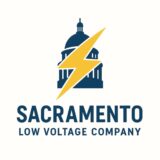Are Solar and Low Voltage Systems Compatible in Sacramento’s Sustainable Housing Market?
Introduction
As Cabling Solutions for Data Centers Sacramento accelerates its transition toward sustainable housing, integrating solar energy systems with low voltage infrastructure has become a strategic approach to enhance energy efficiency and building intelligence. This synergy not only aligns with California’s stringent energy codes but also supports the city’s commitment to reducing carbon emissions and fostering resilient communities.
Understanding Solar and Low Voltage Systems
Solar Energy Systems
Solar energy systems convert sunlight into electricity using photovoltaic (PV) panels. In Sacramento, where electricity prices have increased by 56% from 2020 to 2024, solar installations offer significant cost savings for homeowners and multifamily properties palmetto.com.
Low Voltage Systems
Low voltage systems encompass technologies such as lighting control, security systems, and building automation, operating on circuits below 50 volts. These systems are integral to smart building designs, enhancing energy efficiency and occupant comfort Sac Low Voltage Techs.
Regulatory Landscape in Sacramento
California’s 2022 Building Energy Efficiency Standards mandate solar photovoltaic systems for all newly constructed low-rise multifamily buildings, aiming to offset electrical consumption and promote sustainable development California Energy Commission. Programs like the Solar on Multifamily Affordable Housing (SOMAH) provide financial incentives for solar installations in disadvantaged communities, further supporting the integration of renewable energy in Sacramento’s housing market cpuc.ca.gov.
Integration Challenges and Solutions
Compatibility Issues
Integrating solar systems with existing low voltage infrastructure can pose challenges, including:
- Electrical Interference: Potential disruptions between solar inverters and low voltage circuits.
- Infrastructure Limitations: Older buildings may lack the capacity to support additional systems.
Mitigation Strategies
To address these challenges, consider:
- System Upgrades: Modernizing electrical panels to accommodate both solar and low voltage systems.
- Professional Integration: Engaging certified professionals to ensure seamless system compatibility.
Programs like SMUD’s Virtual Solar assist qualifying multifamily properties in accessing solar energy, even without direct rooftop installations. In addition, smart thermostats and sensors connect through low voltage cabling in homes, allowing for better energy management and integration with solar-powered systems. smud.org.
Case Studies and Real-World Applications
Multifamily Housing Developments
In Sacramento, multifamily housing projects have successfully integrated solar and low voltage systems to enhance energy efficiency and resident comfort. These developments demonstrate the feasibility and benefits of such integrations in urban settings.
Commercial Buildings
Commercial properties in Sacramento are adopting smart building technologies, utilizing low voltage systems for automation and control, while integrating solar energy to reduce operational costs sacramentolowvoltagecompany.com.
Future Trends and Innovations
The convergence of solar energy and low voltage systems is paving the way for:
- Smart Grids: Enhanced energy distribution and management through integrated systems.
- Energy Storage Solutions: Battery systems that store solar energy for later use, increasing reliability.
- Advanced Building Automation: Intelligent systems that optimize energy use and occupant comfort.
These innovations are expected to drive further adoption of integrated systems in Sacramento’s sustainable housing market.
Conclusion
Integrating solar energy systems with low voltage infrastructure in Sacramento’s sustainable housing market offers numerous benefits, including cost savings, enhanced energy efficiency, and improved building intelligence. While challenges exist, the maintenance requirements for low voltage systems in houses should also be considered to ensure long-term efficiency and reliability. However, strategic planning and professional integration can ensure successful implementation, aligning with California’s commitment to a sustainable future.
